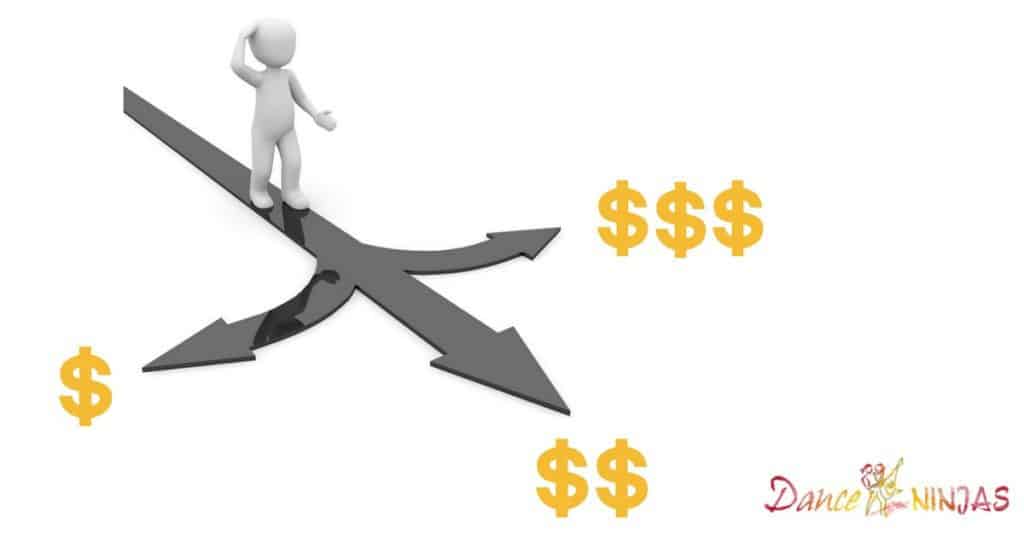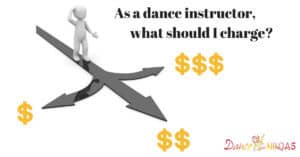[vc_row][vc_column width=”1/4″][vc_column_text] [/vc_column_text][/vc_column][vc_column width=”3/4″][vc_column_text]
How NOT to determine your pricing as a dance instructor
Avoid this all-too-common method that is often a recipe for disaster

[/vc_column_text][vc_column_text]
How do you decide how much to charge when teaching dance?
There are several great ideas to help you decide your pricing, which I’ll be covering on this free webinar.
Plus, if you read to the end of this post, you’ll discover a simple question that can allow you to increase your pricing quite drastically (if you get good at answering it).
Now first…
Let me warn you about an all-too-common method to determine your pricing that is often a recipe for disaster (and why).
Unfortunately, this happens to be the main method many dance instructors use, and it is reinforcing the stereotype that to teach dance for a living, you have to be willing to sacrifice on the financial side (unless you end up being one of the best of the best, in which case you can make a decent living).
Ok, drum roll please…
The method NOT to use is deciding your price based on what other dance instructors charge.
While this might seem like a good idea, most often, it is not.
Why is this most likely a recipe for disaster?
- First, you don’t know why the other instructor chose that pricing. If they have different goals than you do, their pricing might make sense for them (and their students) and not for you (and your students).
. - Second, you don’t know if the other instructor has a solid business plan. There is a very strong chance (probably over 95%) they just chose their price because of what someone else was charging, and that is often a recipe for disaster.
.
This is what I call the “hope and pray” method. You just choose a price without a solid basis for choosing it, then hope and pray it will work. Please don’t do that. Dance instructors all over the world have already proven that it doesn’t work.
By the way, if you’ve already done this, don’t beat yourself up. At first glance, this seems like a reasonable method to use and most other instructors have done it too. That said, it’s time to make a major change.
If you want to learn “how to determine your pricing” – I’ll be sharing my recommendations on that, and much more, on my upcoming webinar “Dance Instructors: Going Premium” – How To Make A Bigger Impact Without Working So Damn Hard.
The webinar is Monday, June 25th at 2pm (California time).
To Register For This Webinar, Click Here.

See you Monday!
~Andrew
P.S. Here is a great experiment:
Spend 5 minutes brainstorming, “What would it take to add a zero to my prices and still have people feeling like I was offering them amazing value?” That means if you charge $1,000 for a workshop, brainstorm $10,000. If you charge $100 for a private lesson, brainstorm $1,000. Feel free to share any brainstorm ideas that would add even a small bump to your value in the webinar.[/vc_column_text][/vc_column][/vc_row]




